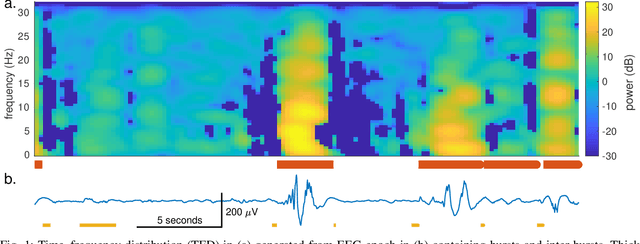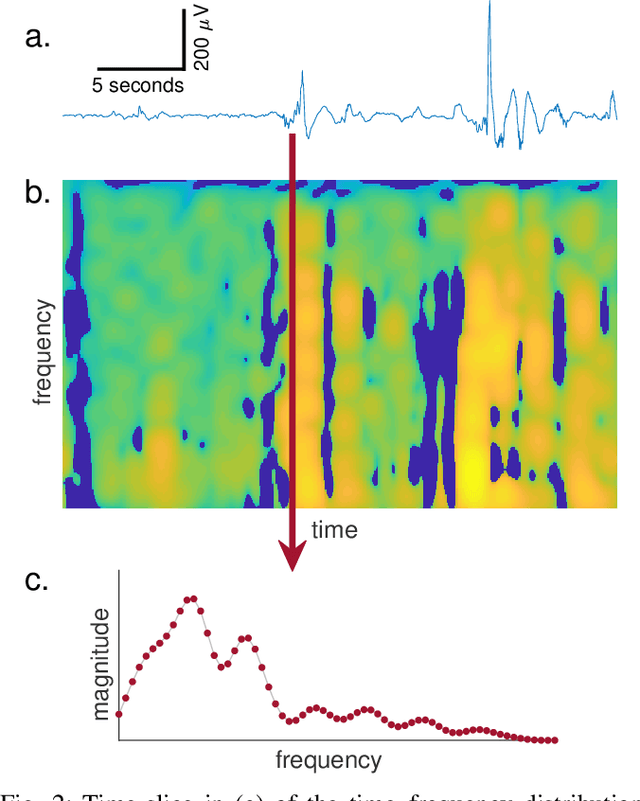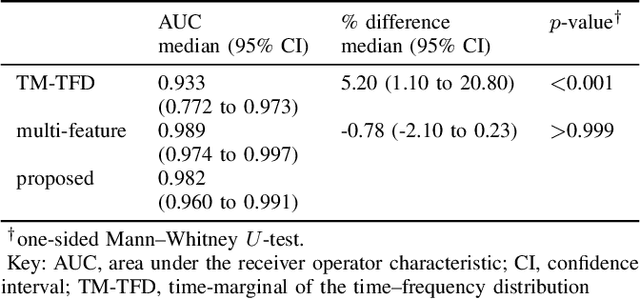Machine learning without a feature set for detecting bursts in the EEG of preterm infants
Paper and Code
Jul 16, 2019



Deep neural networks enable learning directly on the data without the domain knowledge needed to construct a feature set. This approach has been extremely successful in almost all machine learning applications. We propose a new framework that also learns directly from the data, without extracting a feature set. We apply this framework to detecting bursts in the EEG of premature infants. The EEG is recorded within days of birth in a cohort of infants without significant brain injury and born <30 weeks of gestation. The method first transforms the time-domain signal to the time--frequency domain and then trains a machine learning method, a gradient boosting machine, on each time-slice of the time--frequency distribution. We control for oversampling the time--frequency distribution with a significant reduction (<1%) in memory and computational complexity. The proposed method achieves similar accuracy to an existing multi-feature approach: area under the characteristic curve of 0.98 (with 95% confidence interval of 0.96 to 0.99), with a median sensitivity of 95% and median specificity of 94%. The proposed framework presents an accurate, simple, and computational efficient implementation as an alternative to both the deep learning approach and to the manual generation of a feature set.
 Add to Chrome
Add to Chrome Add to Firefox
Add to Firefox Add to Edge
Add to Edge